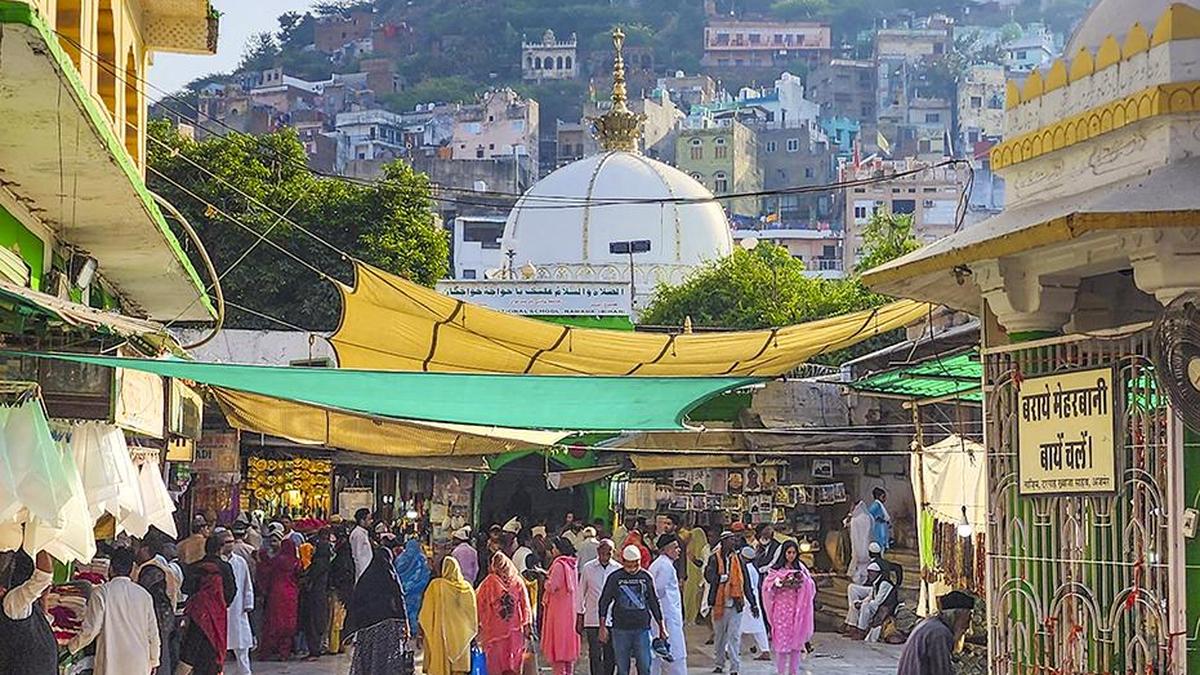On October 21, 2025, a significant legal challenge was brought before the Delhi High Court regarding the management and administration of the historic Ajmer Dargah, a revered 13th-century shrine dedicated to the Sufi mystic Khwaja Moinuddin Chishti. The petition, filed by Syed Meharaj Miya, a Khadim or custodian of the dargah, raised concerns over the non-formation of the statutory Dargah Committee and contested recent administrative decisions, especially the installation of CCTV cameras inside the sanctum sanctorum where the saint’s grave is located.
The Ajmer Dargah is governed by the Dargah Khwaja Saheb Act of 1955, which mandates the formation of a nine-member Dargah Committee responsible for the shrine’s management. However, the petitioner highlighted that this committee has not been constituted for the past three years, a situation that has, according to him, led to mismanagement and financial irregularities. The post of Nazim, the official in charge of the shrine’s administration, had also remained vacant for two years before being filled in January 2025.
Justice Sachin Datta of the Delhi High Court took note of the petition and issued notices to key respondents, including the Union Ministry of Minority Affairs, the Dargah Nazim, and the Comptroller and Auditor General (CAG). The court has asked these parties to respond to allegations of financial mismanagement and explain the delay and failure to constitute the Dargah Committee as required by law.
One of the central issues raised by Mr. Meharaj Miya concerns the Nazim’s recent decision to install CCTV cameras inside the sanctum sanctorum of the dargah. The petitioner described this move as an “arbitrary declaration” that infringes on the spiritual sanctity and privacy of devotees. He argued that placing surveillance equipment in the most sacred part of the shrine would disrupt religious ceremonies and rituals, thereby violating the sanctity of the site. He further pointed out that the Central Government has previously granted exemptions to major shrines where electronic devices and cameras are prohibited from inner areas to preserve their sacred character.
Beyond the CCTV controversy, the petitioner challenged several administrative decisions made by the Nazim’s office in the absence of the Dargah Committee, which he claims have affected the rights and privileges of the Khadims. These decisions include launching a web portal and mobile application, initiating live transmissions of shrine events on a YouTube channel, collecting Zakat (a form of almsgiving), and offering special memberships to donors. The petitioner implied that these initiatives were undertaken without proper oversight and consultation, potentially compromising the dargah’s traditional management practices.
The writ petition also referenced a statement made by the Minister of Minority Affairs, Kiren Rijiju, in the Lok Sabha on August 20, 2025. The minister acknowledged “serious financial irregularities” in the administration of the Ajmer Dargah and presented a summary of the Comptroller and Auditor General’s observations spanning a decade, from 2013-14 to 2022-23. These reports highlighted concerns about the management of dargah funds, which have further fueled the petitioner’s demand for judicial intervention.
Mr. Meharaj Miya has sought several remedies through the court. Primarily, he wants the irregularities, misadministration, unlawful practices, and arbitrary decisions by the dargah management to be stopped immediately. He has also requested directions for the proper upkeep and maintenance of the buildings and structures within the dargah premises. The petitioner’s overarching aim is to ensure that the shrine is managed transparently and in accordance with the statutory provisions laid down under the Dargah Khwaja Saheb Act.
The Delhi High Court is scheduled to hear the matter again on October 30, 2025. The court’s decision could have significant implications for the governance of one of India’s most prominent religious shrines, touching upon issues of religious sanctity, administrative accountability, and the protection of heritage sites.
This case also underscores broader challenges faced by religious institutions in India, where historic and spiritual significance must be balanced with modern administrative practices and transparency demands. The Ajmer Dargah, attracting millions of visitors annually, is not only a place of worship but also a cultural landmark, making its management a matter of public interest.
In conclusion, the petition filed by Syed Meharaj Miya

